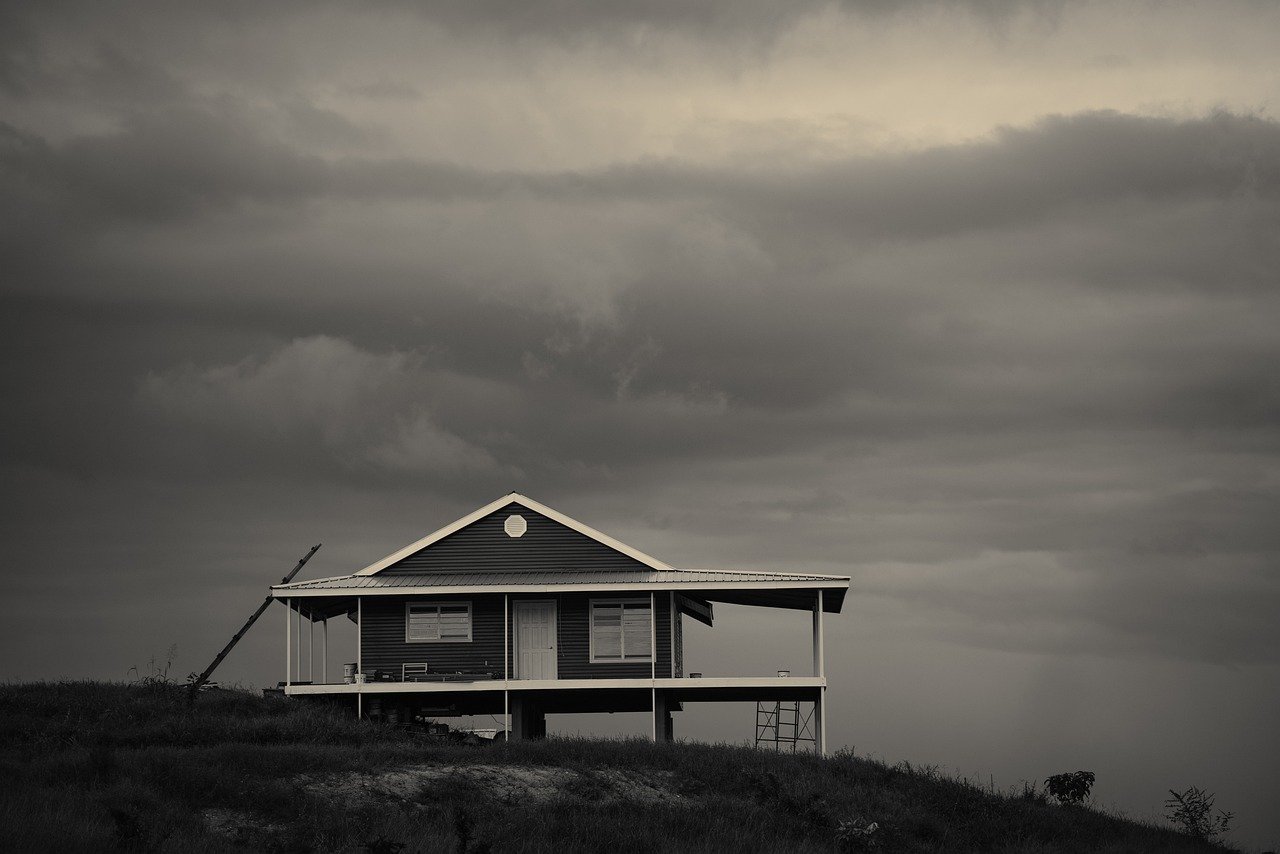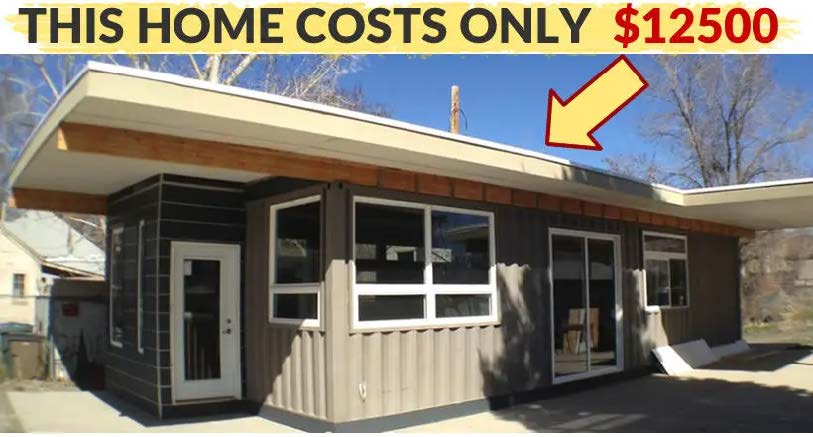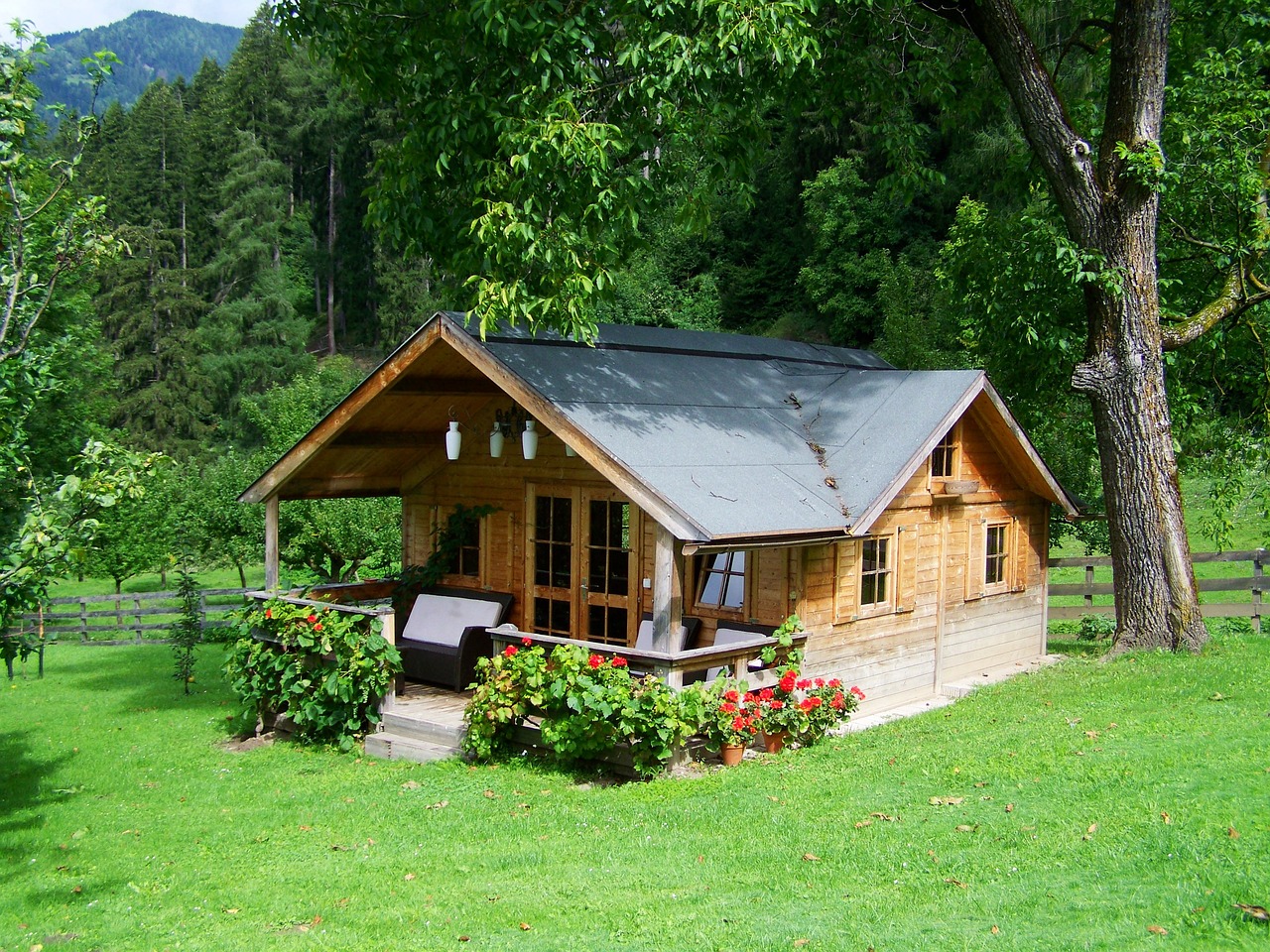Table of Contents
Tiny Homes Advantages and Disadvantages: What to Know Before Downsizing
Imagine waking up in a cozy, well-designed space that’s not much bigger than a typical living room. Tiny homes, offering an alternative to traditional housing, are gaining popularity for their compact and efficient design. They are often more affordable and easier to maintain than regular houses, making them an attractive option for many. So let’s discuss tiny homes advantages and disadvantages.
Living in a tiny home can significantly simplify your life. With less space to fill, you focus more on the things that truly matter. This can lead to a more sustainable lifestyle, as you use fewer resources and create less waste. On the flip side, the limited space can pose challenges, such as finding storage solutions and accommodating guests.
If you’re considering a tiny home, it’s important to weigh both the benefits and challenges. From cost savings to lifestyle changes, there are many factors to consider. Stay with us to explore everything you need to know about tiny house living.
Key Takeaways
- Tiny homes offer affordability and simpler living
- Limited space can be challenging for storage and guests
- Important to weigh benefits and challenges before choosing this lifestyle
- Limited storage space helps to keep living the minimalist life style in check!
- Sharing a smaller living space means less personal space.
- Tiny houses offer the flexibility of moving with your home, but it can be challenging to find suitable land due to zoning requirements.
Exploring the Tiny House Movement
The tiny house movement has gained traction for its appeal to simplicity, affordability, and flexibility. Understanding its origins and how tiny homes stack up against traditional homes helps paint a clear picture of this lifestyle choice.
History of Tiny Living
The tiny house movement began in the late 20th century, inspired by a desire to downsize and simplify life. In the 1970s, the first small, movable homes appeared. These were influenced by the back-to-the-land movement, which emphasized sustainable and simple living.
The movement gained momentum in the early 2000s due to rising housing costs and an increasing awareness of environmental issues. TV shows and online communities helped spread the idea that living in a home as small as 100 to 500 square feet could be not just viable but desirable. Many people were drawn to the financial freedom and reduced environmental impact of tiny homes.
Tiny Homes vs. Traditional Homes
Tiny homes offer several advantages over traditional homes. They are significantly cheaper to build and maintain. Costs can range from $10,000 to $180,000, while the average price is between $30,000 to $75,000. This makes them an appealing option for first-time homeowners or those looking to minimize expenses.
Another benefit is mobility. Many tiny homes are built on trailers, allowing you to move your entire house if needed. Traditional homes, on the other hand, are much more permanent and involve higher costs for relocation.
Yet, tiny homes do have limitations. Space is their most significant drawback. With only 100 to 500 square feet, you need to think carefully about what you truly need and how to maximize space. Traditional homes often offer more comfort and storage, making them attractive for larger families or those who need more room for hobbies and possessions.
Advantages of Tiny Homes
Affordable
Tiny homes are cheaper to build and maintain. Costs tend to range between $10,000 and $75,000, making them a budget-friendly option.
Saving Money
With lower building costs, you’ll spend less on mortgage payments. This frees up your budget for other activities or savings.
Mobility
Many tiny homes are built on wheels. This lets you move your home wherever you want, offering flexibility and adventure.
Eco-Friendly
Living in a tiny home cuts down on energy consumption. Smaller spaces need less heating and cooling, which is better for the environment.
Sustainable Living
Tiny homes can be equipped with renewable energy sources like solar panels. This helps reduce your carbon footprint.
Minimalist Lifestyle
Living in a tiny home pushes you to prioritize what you really need. This can lead to a simpler, more fulfilling life.
Downsized Living
Less space means you’ll own fewer items. This can help reduce stress and make your living area tidier.
Sustainability
Tiny homes often use fewer materials to build. This reduces your impact on natural resources.
Low Maintenance
A smaller home means you have less to clean and maintain. This frees up your time for hobbies and other interests.
By focusing on these advantages, tiny homes can offer a lifestyle that is not only affordable but also sustainable and flexible.
Challenges of Living in a Tiny Home
Living in a tiny home has its own set of challenges that might not be obvious at first glance.
Limited Space: One of the first things you’ll notice is the limited space. You have to be very smart about how you use every inch of your home.
Storage Issues: With limited storage, you might find it hard to keep all your belongings. You’ll need to declutter and find creative storage solutions.
Local Building Codes: When it comes to setting up your tiny home, you may face local building codes and zoning laws. These laws can be strict and might limit where you can place your home.
Zoning Restrictions: Different areas have different zoning restrictions. Some places may not allow you to live in a tiny home full-time, and finding a spot can be difficult.
Depreciate in Value: Tiny homes might depreciate in value quicker than traditional homes. If you plan to sell your tiny home later, you might not get back what you put into it.
Weather Concerns: Tiny homes can be more susceptible to weather conditions. You may need to take extra steps to ensure your home can withstand local weather patterns.
Maintenance: Just like any home, tiny homes require maintenance. The difference is that the wear and tear might happen more quickly due to the compact space.
Living in a tiny home requires you to adjust and adapt. While it can be a rewarding lifestyle, it’s also important to be aware of these challenges.
Design and Customization of Tiny Homes
Designing a tiny home is all about making the most of small spaces. You can get really creative with the layout and furniture to maximize comfort.
Building Materials
Choosing the right building materials is crucial. You might opt for sustainable materials like reclaimed wood. This not only looks great but is also eco-friendly.
Furniture
For furniture, multipurpose pieces are key. A sofa that turns into a bed or tables that fold away can make your tiny home more versatile.
Storage Solutions
Storage solutions are important. Think about built-in shelves that blend into the walls or storage benches that can double as seating. This way, you maintain a clutter-free environment.
- Shelves that double as wall art
- Under-stair storage
- Multi-use furniture
DIY vs. Prefab
You can choose to build your tiny home yourself (DIY) or go for a prefab model. DIY offers more customization but requires more time and effort. Prefabs save time and often have quicker setups.
Cost of Building a Tiny Home
The cost of building a tiny home can vary. Building it yourself can cost between $10,000 to $180,000, while a prefab model might be cheaper. This gives you flexibility based on your budget.
Composting Toilets
Many people opt for composting toilets. They are eco-friendly and help you avoid the need for a traditional plumbing system. This can be a big plus in off-grid settings.
With thoughtful design and smart choices, you can create a tiny home that meets all your needs and stays within budget.
Lifestyle Considerations and Adaptations
Living in a tiny home can change your lifestyle in many ways. Space is the main factor. You’ll need to adapt your routines and habits to fit within a smaller area.
Individuals and Couples
For individuals, a tiny home can feel like a cozy retreat. Couples might need to work on communication and compromise to share such an intimate space. It’s essential to respect each other’s privacy even when space is limited.
Guests and Entertaining
If you like to entertain guests, you’ll need to get creative. You might set up an outdoor area with seating or use multi-functional furniture like sofa beds. Keep the number of guests low to avoid feeling cramped.
Pets
Pets can live in tiny homes too, but make sure there’s enough room for them to move around comfortably. Small pets like cats or small dogs adapt well. Larger pets might find the limited space challenging.
Comfort
Comfort is critical, especially when space is tight. Invest in good quality, space-saving furniture. Foldable or multi-purpose furniture can provide comfort while saving space. Also, good insulation and ventilation help keep your tiny home cozy.
Making the Most of Small Spaces
Use vertical space for storage. Shelves, hooks, and wall-mounted cupboards can keep your belongings organized and out of the way. Consider loft beds or under-floor storage to maximize every inch of your home.
Financial Implications of Tiny House Living
One significant advantage of tiny house living is affordability. Building a tiny home can range from $10,000 to $180,000, with the average cost between $30,000 to $75,000. This makes them a lot cheaper compared to traditional homes. You save money up front, which can be a huge relief if you’re trying to avoid a hefty mortgage.
Maintenance costs are also lower. Tiny homes require fewer materials for repairs and less space to maintain. This means less time and money spent on upkeep. Plus, the smaller footprint can make DIY repairs more feasible, reducing labor costs.
Cost savings extend to utilities as well. Because tiny homes are smaller, they use less electricity, heating, and cooling. This translates to lower monthly bills. You might even find that some tiny houses are built with energy-efficient features, helping to cut costs even further.
There are, however, hidden costs to consider. Land purchase or rent, zoning permits, and utility hookups can add up. Investing in a tiny home also involves careful planning for these potential expenses.
Here’s a quick breakdown:
| Expense | Traditional Home | Tiny Home |
|---|---|---|
|
Purchase Price |
$200,000+ |
$30,000 – $75,000 |
|
Mortgage |
Likely needed |
Often avoidable |
|
Monthly Utilities |
Higher |
Lower |
|
Maintenance Costs |
Higher |
Lower |
|
Hidden Costs (e.g., land, permits) |
Variable |
Variable |
Tiny homes can be a smart investment if you’re looking for cost savings and simplicity. You get to experience homeownership without being overwhelmed by ongoing expenses.
Technical Aspects of Tiny Houses
When it comes to tiny houses, the technical aspects can be a bit different compared to traditional homes. Let’s look at some key points:
Utilities and Plumbing
Tiny homes often have compact plumbing systems. You might opt for a composting toilet rather than a traditional one. Water heating systems are usually smaller, and you might use a tankless water heater to save space.
Heating and Cooling Systems
For heating, many tiny homes rely on electric or propane heaters. Some even use mini wood stoves. Cooling can be managed with mini-split air conditioning systems or portable units.
Insulation
Good insulation is crucial. You can use spray foam, rigid foam, or traditional fiberglass to keep your tiny house comfortable in various climates.
Solar Power
Solar panels can be a great option if you want to live off the grid. They can power lights, appliances, and even your heating and cooling systems.
Location and Mobility
If your tiny house is on wheels, like an RV, you need to consider its weight and how you will move it. The location also impacts your utility options and how you set up your house.
Modern Conveniences
Even though space is limited, you can still enjoy modern conveniences. Compact appliances like washer-dryer combos and mini-fridges are available, and you can also install a small dishwasher.
Here’s a quick list to remember:
- Utilities: Compact plumbing, tankless water heaters
- Heating and Cooling: Electric heaters, mini-split air conditioning
- Insulation: Spray foam, rigid foam, fiberglass
- Solar Power: Panels for off-grid living
- Mobility: Consider weight and moving logistics
- Modern Conveniences: Compact appliances
By considering these technical aspects, you can set up a tiny house that is both functional and comfortable.
Community and Social Experience
Living in a tiny home can offer a unique sense of community. Since tiny home neighborhoods often have a close-knit feel, you might get to know your neighbors more easily.
People often bond over their shared interest in minimalistic living. This can lead to friendships with others who value simplicity and sustainability.
Living in a portable home also gives you the ability to join different communities across the country. Traveling with your tiny home means you can experience various social environments.
You’ll find that accessibility becomes important. Tiny home communities might offer shared amenities like laundry facilities or common gardens, fostering a sense of cooperation.
A benefit of these communities is often less cleaning. With smaller spaces, you’ll spend less time tidying up, giving you more opportunities to connect with others.
Environmental impact can also be a focal point. Living small usually means living greener, which is a common interest for residents. Sharing eco-friendly practices can enhance social bonds.
Compromise is a key element in these settings. You might need to share resources such as water or counter space in communal kitchens. This often requires and fosters cooperation.
These communities cater to minimalists who embrace tiny living, enhancing the social benefits. You’ll find like-minded individuals who appreciate living with fewer material possessions.
Frequently Asked Questions
Tiny homes advantages and disadvantages. They can be more affordable and environmentally friendly, but they also come with potential difficulties like space limitations and maintenance.
What are the major pros and cons of living in a tiny house?
Living in a tiny house can save you money on building and living costs. With less space, you spend less on heating and cooling. On the flip side, tiny houses can feel cramped and there’s less room for belongings or guests.
How do tiny homes cope with maintenance and repairs?
Tiny homes often have lower maintenance costs compared to traditional houses due to their smaller size. However, specific issues like plumbing or roofing can still be expensive. You might do a lot of DIY repairs, which can be both good and bad.
Are tiny houses really cost-effective in the long run?
Yes, tiny houses can be cost-effective because they generally cost less to build and maintain. They also use less energy, which can save you money. You can find more details on costs from Tiny House Pros and Cons: A Compact Living Guide.
What are some common challenges faced by tiny house residents?
Living in a tiny house can come with challenges like lack of storage and limited living space. You might also face zoning and legal issues. Adjusting to a smaller living area can be tough if you’re used to more space.
Why are tiny homes becoming increasingly popular?
Tiny homes are popular because they are more affordable and sustainable. People like the idea of living simply and reducing their environmental footprint. You can read about the benefits in The Pros and Cons of Tiny Homes – Landopia.
How sustainable and durable are tiny houses compared to traditional homes?
Tiny houses tend to be more sustainable because they use fewer resources and generate less waste. They can be just as durable if built with quality materials and proper techniques. Follow more insights on this from 5 Myths About Tiny Homes Debunked.




